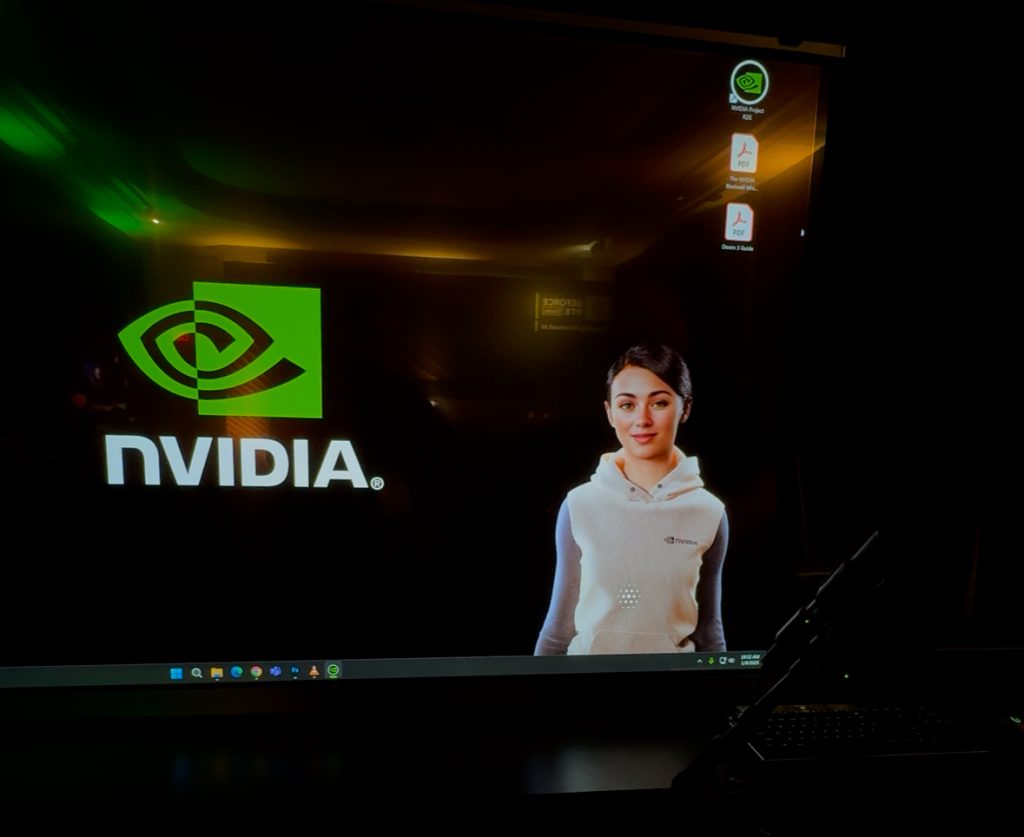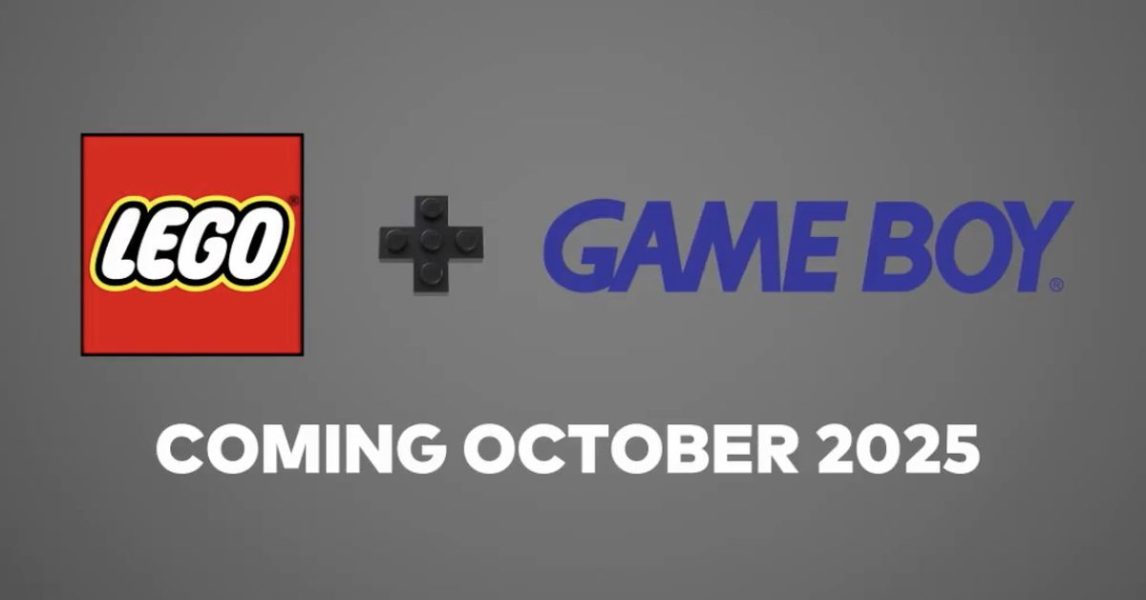Nvidia’s AI avatar sat on my computer screen and weirded me out – TechCrunch

Latest
AI
Amazon
Apps
Biotech & Health
Climate
Cloud Computing
Commerce
Crypto
Enterprise
EVs
Fintech
Fundraising
Gadgets
Gaming
Government & Policy
Hardware
Layoffs
Media & Entertainment
Meta
Microsoft
Privacy
Robotics
Security
Social
Space
Startups
TikTok
Transportation
Venture
Events
Startup Battlefield
StrictlyVC
Newsletters
Podcasts
Videos
Partner Content
TechCrunch Brand Studio
Crunchboard
Contact Us
Nvidia unveiled a prototype AI avatar at CES 2025 that lives on your PC’s desktop. The AI assistant, R2X, looks like a video game character, and it can help you navigate apps on your computer.The R2X avatar is rendered and animated using Nvidia’s AI models, and users can run the avatar on popular LLMs of their choice, such as OpenAI’s GPT-4o or xAI’s Grok. Users can talk with R2X through text and voice, upload files to it for processing, or even enable the AI assistant to view what’s happening live on your screen or camera. Tech companies are creating a lot of AI avatars recently, not just in video games but also for enterprise and consumer customers. The early demoes are strange, but some think these avatars are a promising user interface for AI assistants. With R2X, Nvidia is trying to combine generative video game capabilities with cutting-edge LLMs to create an AI assistant that looks and feels like a human.Here’s my demo with Nvidia’s R2X avatar prototype, an AI assistant that lives on your desktop pic.twitter.com/8oT941dHGqThe company plans to open source these avatars in the first half of 2025. Nvidia sees this as a new user interface for developers to build with, allowing users to plug in their favorite AI software products or even run these avatars locally.Much like Microsoft’s Recall feature (which has been delayed due to privacy concerns), R2X can take constant screenshots of your screen and run them through an AI model for processing, though this feature is turned off by default. When on, it can offer feedback on applications running on your computer and, for example, help you work through a complex coding task.R2X is still a prototype, and even Nvidia admits there are still some bugs to work out. In demos with TechCrunch, Nvidia’s avatar had an uncanny-valley feel to it — its face sometimes got stuck in odd positions, and its tone felt a little aggressive at times. And broadly, I find it a little odd to have a humanoid avatar stare at me while I work.Here’s Nvidia’s R2X, but powered by Grok pic.twitter.com/kyOOORQ1kRR2X generally offered helpful instructions and accurately viewed what was on the screen. But at one point, the avatar gave us incorrect instructions, and later on, the avatar stopped being able to view the screen at all. This may be an issue with the underlying AI model (in this case, GPT-4o), but the example shows the limitations of this early technology.In one demo, an Nvidia product lead showed how R2X can view, and assist users with, the apps on your screen. Specifically, R2X helped us use Adobe Photoshop’s generative fill feature. The photo we selected was of Nvidia CEO Jensen Huang standing in an Asian restaurant with two restaurant workers. Nvidia’s avatar hallucinated and gave the wrong instructions for where to find the generative fill feature in Photoshop. It later lost the ability to view the screen, but after switching the AI model we used to xAI’s Grok, the avatar regained its screen viewing abilities.Here’s R2X helping us use generative fill in Adobe Photoshop (it gave us incorrect instructions though) pic.twitter.com/CDLjbduBEwIn another demo, R2X was able to ingest a PDF from the desktop and then answer questions about it. This process is powered by a local retrieval augmented generation (RAG) feature, which gives these AI avatars the ability to pull information from a document and process it using the underlying LLM.And here’s R2X ingesting files and answering questions about them pic.twitter.com/LtFCGGbHXtNvidia is using some AI models from its video game division to power the way these avatars look. To generate avatars, Nvidia uses its RTX neural faces algorithm. To automate the face, lip, and tongue movement, Nvidia is using a new model called Audio2Face™-3D. That model seemed to stall at some points, holding the avatar’s face in awkward positions.The company also says these R2X avatars will be able to join Microsoft Teams meetings, acting as a personal assistant. An Nvidia product lead says the company is working to give these AI avatars agentic abilities as well, so that R2X could one day take actions on your desktop. These abilities seem to be a long way out, and they would likely require partnerships with software makers like Microsoft and Adobe, which are trying to develop similar agentic systems themselves.It’s not immediately clear how Nvidia is generating the voices in these products. R2X’s voice when using GPT-4o sounds unique from any of ChatGPT’s preset voices, whereas xAI’s Grok chatbot doesn’t have a voice mode at all yet. TechCrunch has an AI-focused newsletter! Sign up here to get it in your inbox every Wednesday.CES 2025, the annual consumer tech conference held in Las Vegas, is upon us — and this is where you…Topics
Senior Reporter, Consumer
How OpenAI’s bot crushed this seven-person company’s web site ‘like a DDoS attack’
How to delete Facebook, Instagram, and Threads
Meta eliminates DEI programs
Automattic says it will reduce its contribution to WordPress core project to match WP Engine
India’s digital payments strategy is cutting out Visa and Mastercard
Tesla launches new-look Model Y in China
Mark Zuckerberg gave Meta’s Llama team the OK to train on copyrighted works, filing claims
Subscribe for the industry’s biggest tech newsEvery weekday and Sunday, you can get the best of TechCrunch’s coverage.TechCrunch’s AI experts cover the latest news in the fast-moving field.Every Monday, gets you up to speed on the latest advances in aerospace.Startups are the core of TechCrunch, so get our best coverage delivered weekly.By submitting your email, you agree to our Terms and Privacy Notice.© 2024 Yahoo.
Source: https://techcrunch.com/2025/01/09/nvidias-ai-avatar-sat-on-my-computer-screen-and-weirded-me-out/



